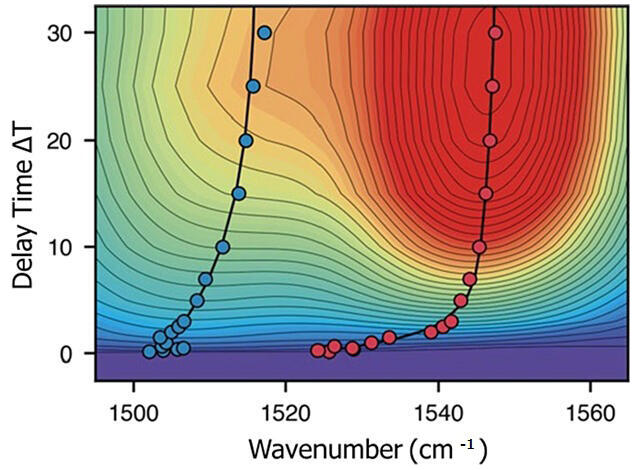Researchers from the Institute for Molecular Science (Graduate University for Advanced Studies, SOKENDAI), led by Assistant Professor Yusuke Yoneda and Associate Professor Hikaru Kuramochi, along with Professor Shohei Saito from the University of Osaka's Graduate School of Science and Kyoto University's Graduate School of Science, have announced the first direct observation of how molecules exhibiting excited-state aromaticity undergo structural changes after light irradiation. Their findings reveal that major electronic state changes occur within hundreds of femtoseconds (10−15 seconds), followed by stepwise planarization on a picosecond (10-12 seconds) timescale. These discoveries were made using femtosecond transient absorption spectroscopy and time-resolved impulsive stimulated Raman spectroscopy (TR-ISRS). The results, expected to contribute to the development of photofunctional and photoresponsive materials, were published in the Journal of the American Chemical Society on March 9.

Credit: Kuramochi Group
In recent years, the synthesis of novel molecules exhibiting excited-state aromaticity and the advancement of time-resolved spectroscopy using ultrashort pulse lasers have enabled the observation of dynamics related to excited-state aromaticity. However, these observations have typically focused on stable equilibrium states and near stable ones. Many questions have remained unanswered about specifically when and how molecules become aromatic upon excitation by light irradiation.
In this study, the researchers used femtosecond TR-ISRS to directly capture ultrafast structural changes in the excited state as time-dependent changes in Raman spectra (vibrational spectra). They examined a recently developed "flapping molecule" (FLAP) with a cyclooctatetraene (COT) skeleton (a molecule where eight carbon atoms are connected in a ring). This molecule has the characteristic of transforming from a bent structure to a planar structure after light irradiation, driven by excited-state aromaticity.
First, using transient absorption spectroscopy, they confirmed rapid changes in electronic states occurring within hundreds of femtoseconds. Meanwhile, TR-ISRS measurements revealed continuous frequency shifts in the stretching vibrations of the COT ring over a picosecond timescale, indicating that the molecule planarizes gradually.
Comparative studies with quantum chemical calculations showed that the excited molecule begins to exhibit aromaticity while still in its bent structure, then gradually planarizes to acquire stronger aromaticity. This finding contradicts the previously assumed simple mechanism that aromaticity only emerges after planarization.
Kuramochi commented: "Aromaticity exhibited by molecules in excited states is an important concept in designing photofunctional molecular materials. However, when and how molecules acquire aromaticity and change their shape remained unclear. In this research, we were able to elucidate this for the first time by combining cutting-edge laser spectroscopy and outstanding organic synthesis chemistry techniques. I am delighted that our efforts, which brought together the skills and knowledge of all team members, have resulted in this published paper."
Journal Information
Publication: Journal of the American Chemical Society
Title: Excited-State Aromatization Drives Nonequilibrium Planarization Dynamics
DOI: 10.1021/jacs.4c18623
This article has been translated by JST with permission from The Science News Ltd. (https://sci-news.co.jp/). Unauthorized reproduction of the article and photographs is prohibited.




